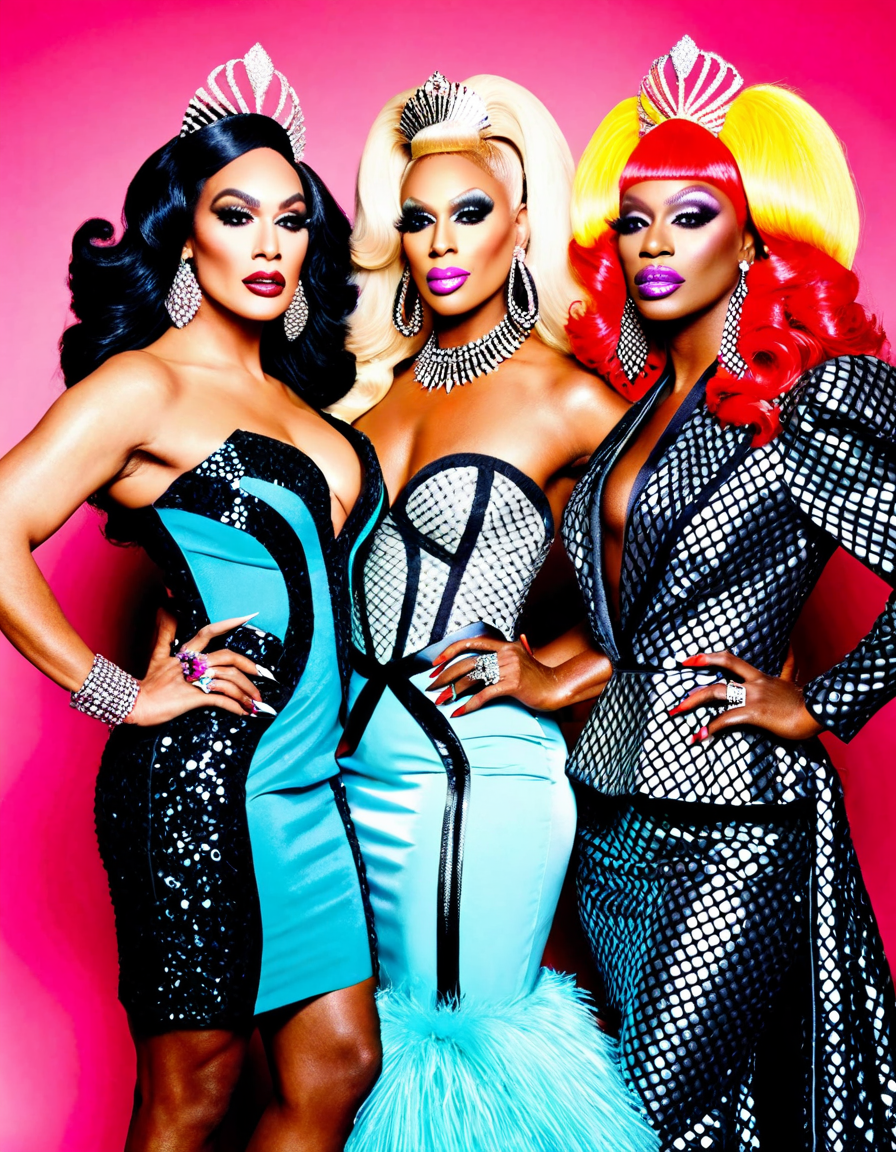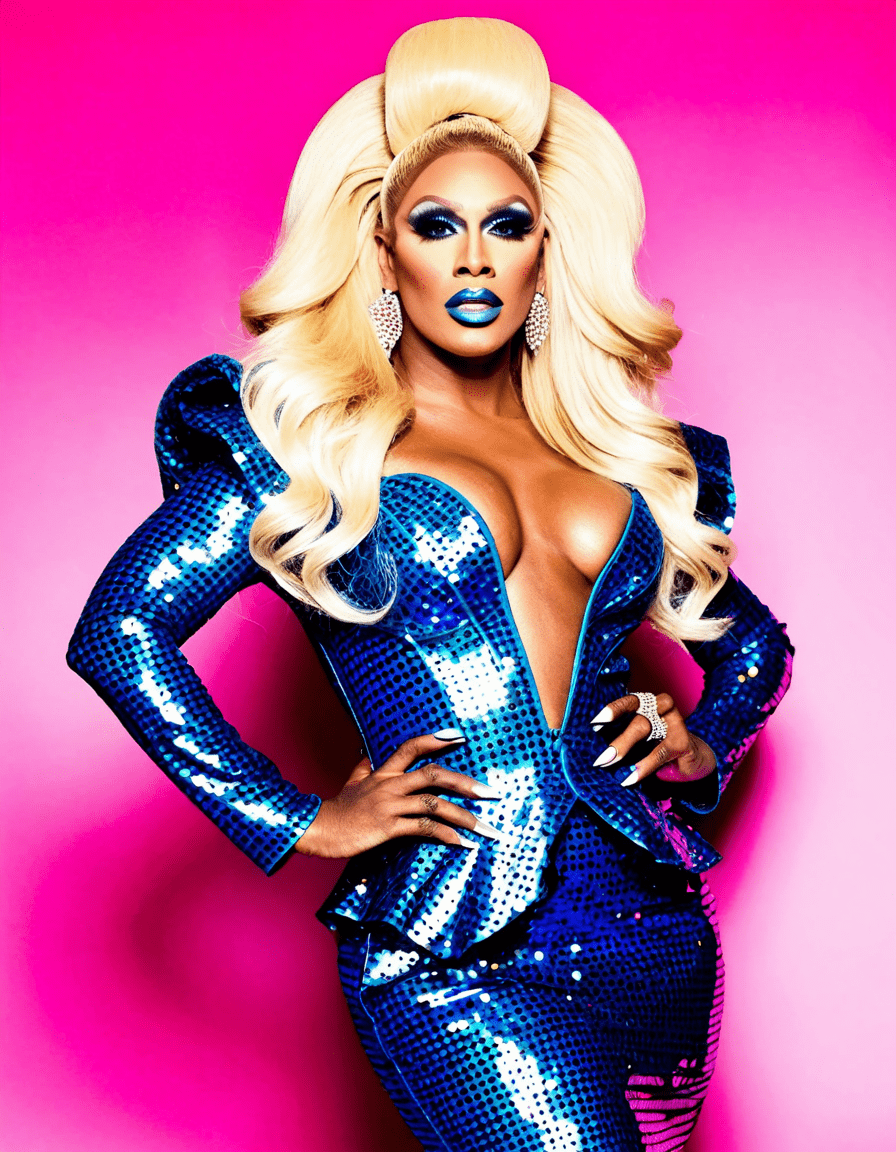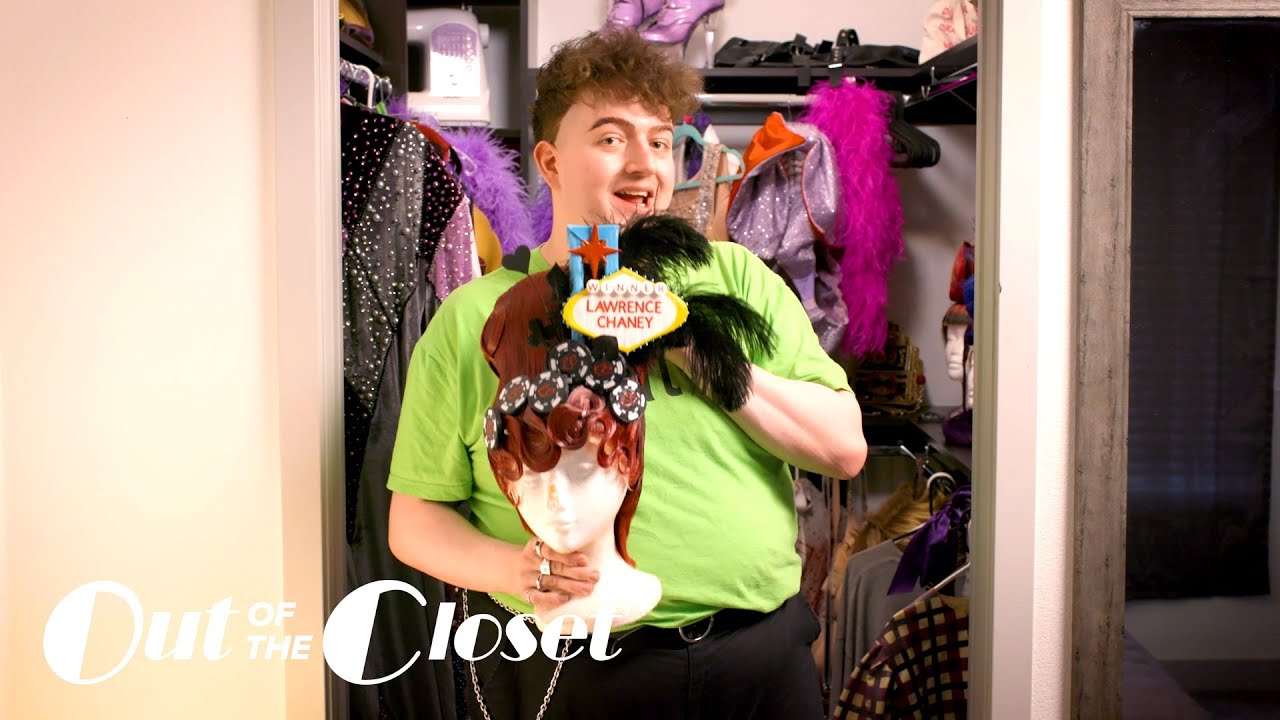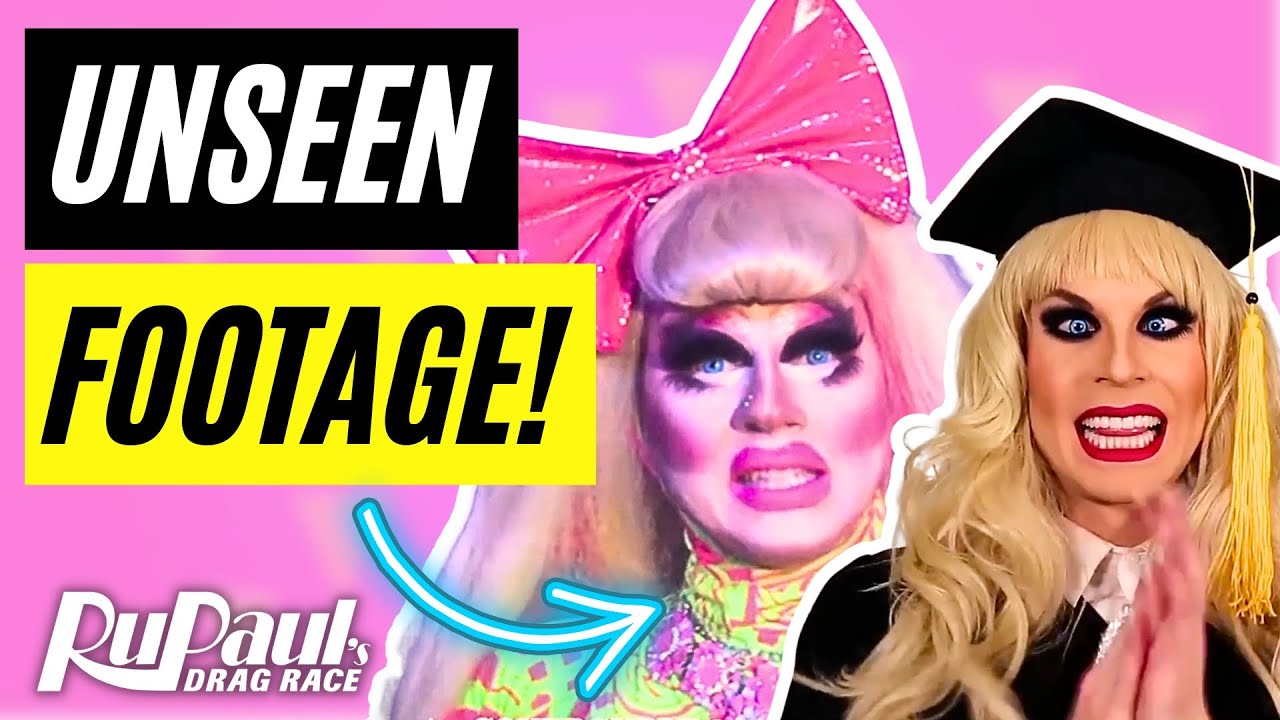RuPaul’s Drag Race has evolved far beyond a reality show to become a vital cultural touchstone, especially within the LGBTQ+ community. Now in its 16th season, this groundbreaking series has spotlighted dazzling queens who not only entertain but also challenge norms in fashion, music, and society itself. RuPaul’s Drag Race isn’t just a competition; it’s a vibrant mixture of artistry, resilience, and relentless creativity that engages film and pop culture enthusiasts alike, making it a can’t-miss phenomenon!
Top 7 Fierce Queens from RuPaul’s Drag Race Who Are Shaping the Future
Let’s dive into the fierce figures of RuPaul’s Drag Race who are pioneering the future of entertainment. These queens are not just competitors; they are trendsetters, leaders, and advocates who have a lasting impact on both media and society.
Sasha Velour transformed the drag competition with her avant-garde performances and intellectual approach. Known for her stunning wigs that defy gravity, she uses her artistry to push boundaries. Her shows blend narrative storytelling with political messages—she’s as much a scholar as she is a queen. By redefining beauty standards and representation, Sasha has captivated audiences and sparked critical conversations. Learn more about Her iconic Designs like white Corsets.
Bianca Del Rio is the queen of quick wit and acerbic commentary. With a background in comedy, she’s graced various stages and screens, including her prominent role in “To Wong Foo: Thanks for Everything, Julie Newmar.” Bianca delivers not just laughs but powerful messages that challenge societal norms through her performances. She shows us that humor can effectively critique and empower, all while selling out theaters around the world.
The charismatic Bob the Drag Queen won Season 8 and carries her crown with grace, always advocating for social justice. Alongside her podcast, “Sibling Rivalry,” where she and fellow queen Monet X Change engage in candid conversations, Bob addresses vital issues like racial inequality and LGBTQ+ rights. With her humor and depth, she entertains while encouraging thought-provoking discussions.
Crowned in Season 13, Symone quickly emerged as a fashion powerhouse by drawing inspiration from African-American history and culture. She’s strutted the runway for top brands, including Balenciaga and has lit up New York Fashion Week. Symone’s diverse looks serve as inspiration for many, particularly aspiring queens of color, emphasizing the rich tapestry of drag culture.
Gigi Goode took the drag world by storm with her unparalleled fashion sense, embracing a gender-fluid identity that redefined drag aesthetics. Her collaborations with renowned designers have showcased how drag can coexist with high fashion. Gigi represents a refreshing outlook in the industry, inspiring future drag artists to blend style with performance art.
Trixie Mattel’s trajectory post-Drag Race is a testament to her talent and business savvy. From launching a successful music career to starring in her web series, Trixie connects with fans through the fusion of country music and drag. Her entrepreneurial spirit showcases that drag can inform multiple facets of popular culture, making her a multifaceted icon for aspiring artists.
Monet X Change has carved her path by bringing awareness to mental health issues through engaging storytelling and humor. As a co-host on various platforms, she embraces her role as a beacon for black queens in the drag community. Monet’s openness about her experiences resonates with many, fostering candid discussions around topics often sidelined in mainstream media.

The Influence of Young Scooter on the Drag Culture
The music and drag cultures have intertwined in fascinating ways, particularly through collaborations with artists like Young Scooter. Bring his own unique sound, Young Scooter exudes themes of resilience and self-expression—key components that align with the essence of RuPaul’s Drag Race.
Queens have stepped into the spotlight by appearing in Young Scooter’s music videos, further highlighting the fluidity between genres. This exchange of art forms increases the visibility of drag as a legitimate art form, aligning it with contemporary hip-hop culture.
Recognizing Talent Across Genres
Collaborations between these vibrant artists reveal a beautiful synergy that elevates both drag and music. Young Scooter, with his engaging beats and narrative storytelling, reflects the ongoing evolution of LGBTQ+ representation within mainstream media. Sharing the stage with queens, he challenges the norms of both the drag and hip-hop scenes, creating a platform for diverse voices.
The Future of Drag and Its Role in Popular Culture
As RuPaul’s Drag Race continues to expand, drag has solidified its status as a recognized art form that pushes political and cultural boundaries. More than just a performance, drag has become a channel for advocacy, encouraging audiences to engage in critical conversations about identity, mental health, and social justice.
Drag queens today are not just entertainers; they are advocates for change. They’ve made substantial strides in conversations surrounding diversity and representation in both media and society. The incredible legacy of RuPaul’s Drag Race lies in its ability to inspire confidence and creativity in future generations.
In a world increasingly straddled by ideas of gender and expression, RuPaul’s Drag Race lights the path ahead. Its fierce queens continue to influence music, fashion, and culture, ensuring that conversations about identity resonate well beyond the stage. The future looks bright—and fabulous—for the world of drag. With each new season, we eagerly await the next wave of queens ready to shake up our perceptions and light up our screens!

RuPaul’s Drag Race Takes Center Stage with Fierce Queens
The Glamorous Origins of Drag Race
Did you know “RuPaul’s Drag Race” made its debut in 2009? The show quickly blossomed into a cultural phenomenon, showcasing the art of drag and giving rise to a slew of fierce queens. RuPaul, often described as the “Mother of Drag,” is one trailblazer who swiftly transformed the landscape. It’s fascinating how the series has not only popularized drag but also integrated music and celebrity guests—some even like Jermaine Jackson, whose appearance brought extra star power into the competition. Just imagine the iconic performances and runway walks that have left audiences gasping, reminiscent of the electrifying atmosphere at events like Bonnaroo.
Snatching Wig and Hearts: Fun Facts That Stun
The queens on “RuPaul’s Drag Race” often bring more than just fabulous outfits to the stage. For example, Sasha Grey, known for her career in adult film, showcased her talent in a completely different arena, proving that versatility is key. Speaking of iconic looks, do you recall the unforgettable moment when a contestant rocked a white corset that became viral overnight? These moments are all about the drama and flair that keep fans glued to their screens. As one contestant put it,We’re serving drama like you’d serve beef liver—bold and unapologetic!
Behind the Sequins: Personalities and Partnerships
The personalities on “RuPaul’s Drag Race” are diverse, each contributing to the rich tapestry of the show. Queens like Gabby Windey have made unforgettable impressions, whether it’s through catchphrases or sheer charisma. It’s also interesting to note how collaborations enrich the experience, much like the dynamic between actors and writers. Shifty Shellshock once spoke about how humor and personality are pivotal to a queen’s success, while Steven Landesberg shared laughs and wisdom during guest appearances, blending entertainment with insight. And then there’s the iconic Fujiko Mine, whose bold style resonates with the adventurous spirit of drag culture.
In the grand scheme, “RuPaul’s Drag Race” continues to evolve, breaking barriers while ensuring that its heart beats strong with creativity and authenticity. With each season, we look forward to seeing how the queens will redefine drag and challenge norms, keeping us all on the edge of our seats.







